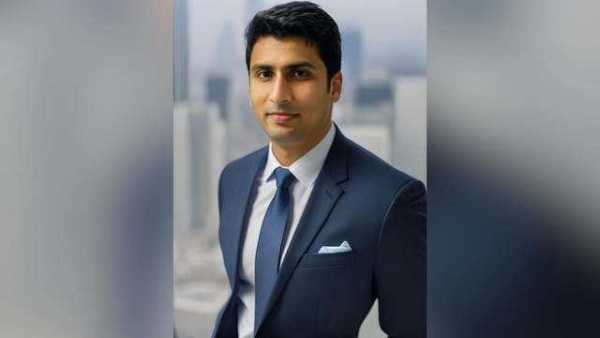
In the field of physical therapy, success encompasses far more than financial metrics alone. A truly thriving physical therapy clinic strikes a careful balance between financial health and the quality of patient care it delivers. Achieving this equilibrium requires clinic leaders to cultivate a culture where both profit and patient outcomes are valued equally.
Vidit Phanse represents how to dominate this fragile harmony. His methodology highlights the significance of coordinating monetary targets with patient-driven care to drive supported development and functional productivity. In exercise-based recuperation, the achievement isn't just about accomplishing monetary profits but additionally about conveying excellent consideration to patients. Pioneers in this field frequently face the test of overseeing the two perspectives. Vidit Phanse's aptitude features the significance of this double concentration.
Guaranteeing that the center's remaining parts are monetarily suitable by setting and accomplishing income targets, overseeing expenses, and making key ventures, is crucial. This monetary oversight is critical for supporting activities, subsidizing new drives, and growing administrations. “In any case, zeroing in exclusively on monetary measurements can prompt a disregard of patient consideration, which at last affects the center's standing and patient fulfillment”, remarks Vidit.
At the core of non-intrusive treatment is the obligation to work on patients' well-being and prosperity. Excellent consideration requires a devoted spotlight on treatment viability, patient fulfillment, and generally speaking experience. He guaranteed that the group has the assets and backing important to give first-rate care, as this drives patient results and center standing. His way of dealing with administration in active recuperation shows how to orchestrate monetary objectives with patient consideration. “My way of thinking spins around grasping the alternate points of view of initiative and clinical groups, and adjusting them towards a shared objective”, says Vidit.
From an initiative outlook, the emphasis is on setting monetary targets, streamlining functional productivity, and going with vital choices that influence the center's general achievement. Pioneers are answerable for estimating income and overseeing spending plans, and it is met to guarantee monetary objectives. Nonetheless, this center should be offset with a pledge to patient consideration.
For the clinical group, the essential spotlight is on conveying remarkable patient consideration. Their everyday obligations include treating patients, dealing with their treatment designs, and guaranteeing positive results. At the point when pioneers underscore monetary objectives without adjusting them to patient consideration goals, it can prompt obstruction and separation among staff.
Moreover, one of Phanse's key experiences is the significance of powerful informing. Pioneers frequently experience difficulties when their correspondence doesn't resound with the clinical group. The methodology that he stresses begins with the "WHY" as opposed to simply introducing objectives according to a monetary viewpoint.
He encourages pioneers to convey objectives in a manner that lines up with the group's needs. Rather than outlining targets exclusively in monetary terms, pioneers ought to feature how accomplishing these objectives upgrades patient consideration. For instance, as opposed to educating staff to be more useful, pioneers can approach it as making more access for patients or giving far-reaching treatment. This change in informing assists the group with seeing the association between monetary objectives and their day-to-day work, cultivating a feeling of common perspective and commitment. Successful booking and anticipating are significant for adjusting monetary and patient consideration goals. His skill incorporates executing procedures that upgrade both functional proficiency and patient fulfillment.
One of Vidit's core set of ideas is to set clear assumptions with patients during their underlying assessment. By educating patients about the number of arrangements expected for their therapy, the center can all the more likely deal with its timetable and guarantee that patients get the consideration they need. This approach works on persistent fulfillment as well as helps in arranging and overseeing facility assets.
Anticipating future patient volumes is fundamental for overseeing staffing levels and functional requests. By anticipating patient necessities 4 a month and a half ahead of time, pioneers can improve staffing levels, diminish staff pressure, and stay balanced. Powerful estimating additionally empowers centers to put resources into new hardware, high-level confirmations, and further developed treatment innovations, which upgrade the nature of care and functional proficiency.
He underlines the significance of steady, manageable development. Quick, unexpected development can strain assets and lead to functional difficulties. All things considered, zeroing in on consistent, gradual enhancements permit facilities to adjust and scale successfully. This approach guarantees long-haul achievement and security, both regarding monetary well-being and patient consideration.
Vidit Phanse’s way of dealing with administration in active recuperation facilities shows the way that offsetting monetary objectives with patient consideration can drive achievement. By adjusting monetary goals to the group's emphasis on understanding results, pioneers can encourage a cooperative climate that improves both functional effectiveness and patient fulfillment. Compelling informing, key determining, and a guarantee to reasonable development are key parts of this fair methodology.
In conclusion, Vidit Phanse's skill features the significance of coordinating monetary and patient consideration targets to make long haul progress in exercise based recuperation centers. His methodologies offer significant bits of knowledge for pioneers looking to explore the intricacies of this field, guaranteeing that both monetary wellbeing and patient fulfillment are focused on.